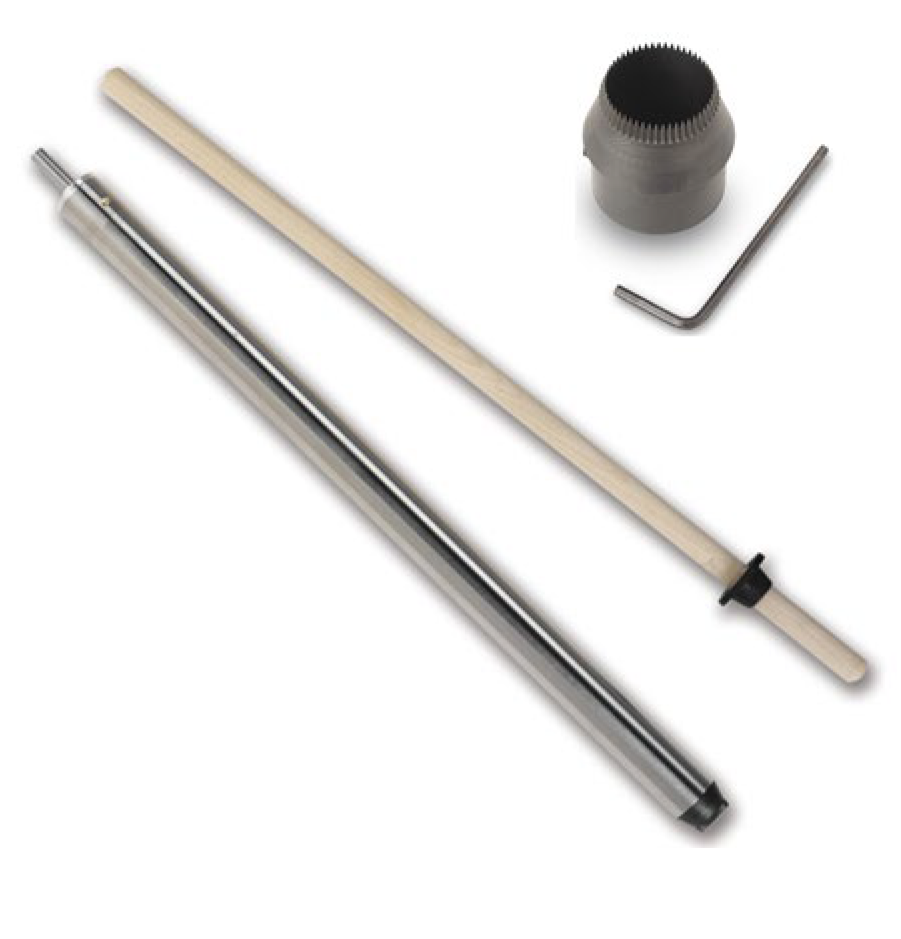⇦ Back to Livestock and Feedstuff Management Home
¶ Introduction
A “hay probe” should be used for sampling hay; never take hand-grab or flake samples. There are many different types of coring devices for sampling hay. Each design has advantages and disadvantages. While there are a wide range of acceptable designs, there are some important common guiding principles to use in choosing a hay probe.
¶ Key Elements of a Good Hay Probe
A hay probe should be designed to accurately represent the leaf-to-stem ratio and the legume-grass-weed mixture of the hay. It should collect a sample of about 1/2 pound in 20 cores.
- Can be push-type or drill-type.
- Good, sharp tip, either serrated, scalloped, or straight. Angle of the cutting end of the tip must be 90° from length of the shaft, not angled.
- Tip is 3/8 to 3/4 inch in diameter.
- Ability to sharpen or replace tip.
- Tip diameter less than shaft diameter to aid in sample movement
- Ease of use – easy penetration into hay package
- Shaft length 12 to 24 inches
- Collection container; mechanism for removal
- Ease of removing sample after 20 cores
- Produces about 1/2 lb. of sample in 20 cores
- Durability; ease of transport
¶ Sharp tip, 3/8 to 3/4 inch diameter
The tip is a very important feature. Tips should be replaceable or able to be sharpened. Tips may be serrated, scalloped, or straight, as long as they cut evenly, and do not push aside stems or particles. The face of the tip should be 90° to the shaft, not slanted.
The inner diameter of the tip should be slightly smaller than the inner diameter of the shaft. However, tips with inner diameter less than 3/8th inch will not fairly represent the leafto-stem ratio. Tips that are too large result in an oversize final sample.
¶ Shaft length, 12 to 24 inches
Research shows that it is not necessary to collect hay samples deeper than 24 inches. Sampling to 12 inches is often acceptable. In most cases the number of probes (e.g. > 20 cores) is much more important.
Large diameter, long probes have the disadvantage that very large-sized samples are created with twenty (20) cores. Probes that are too small do not accurately represent the hay quality. Probes should be designed so that twenty cores yield about one-half pound of hay sample.
¶ Power source
The power source may be human (push type), mechanical hand auger (drill type), or electric or gas drills (drill type). Whatever power source is used should allow the sampler to penetrate for 12 to 22 inches.
Operate drills at slow speeds while sampling. High speeds can heat the probe and affect sample results.
¶ Sample collection
Some probes have a mechanism which aids in collecting all the sample in a container for submission to the lab. The sample collection container should not allow fine particle or moisture loss.
¶ Augers
Auger flighting is sometimes used to help penetrate tightly packed hay packages when using a drill-type probe. Auger flighting is not used in push-type probes and is not necessary if the tip and shaft design allow good penetration. “Open auger” designs are unacceptable since smaller particles are lost.
¶ Figure 1. "Penn State"-Style Hay Probe Shaft

¶ References
Putnam, D. 2001. What to look for in a hay probe (poster). National Forage Testing Assn., Stuart, Florida